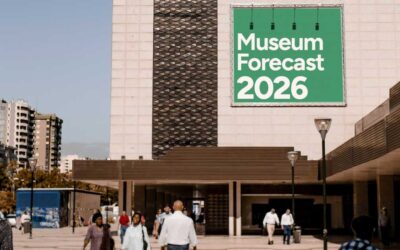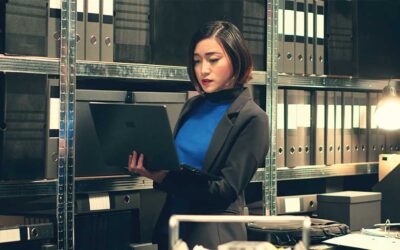Museum Challenges and How a CMS Can Help – Part 2

Rachael Cristine Woody
Last week we reviewed the first two of the top four challenges museums currently face. These challenges were derived from everything I heard during my conference attendance this year and my observation that the museum collections management system was not identified as a tool to use toward solutions.
In Part 2 of this post I’ll review the last two of the top four museum challenges and how the museum collections management system can help us overcome them. The four challenges are: past practices, funding, DEAI, and the digital visitor.
Challenge: DEAI
Diversity, Equity, Accessibility, and Inclusion (DEAI) is an aspirational mandate that is becoming a required practice within the museum industry. While our understanding of DEAI is still evolving, that doesn’t mean we shouldn’t begin to experiment with how we can implement a DEAI practice within the museum. Here’s a brief explanation of how each DEAI component manifests for museums:
- Diversity: A diversity of people represented and stories told through the diversification of the history, art, and culture collected and displayed by the museum
- Equity: Equitable museum practices that resolve bad past practices and elevate support for under-represented persons
- Accessibility: Accessible museum experiences available to people of all learning abilities
- Inclusion: Inclusion of all people (abilities, identities, and orientations) in museum operations and enjoyment
Here’s how the CMS can help:
The museum field is at the beginning stages of understanding how we can effectively implement DEAI practices. Though each component of DEAI can be supported in a variety of ways, here are some specifics of how a museum collections management system can enable the practice:
- The museum CMS can support additional and diverse stories told through digital exhibits by providing more (digital) space than what is available in the physical galleries.
- The museum CMS can deliver provenance transparency and accountability by shining a light on bad past practices and making a commitment to do better.
- Museums can provide different digital exhibit portals to scale to different accessibility needs, thus improving access to fit all learning abilities. (Please see Making Museums Accessible for more information on how to make the museum and its CMS more accessible to visitors of all abilities).
- Inclusion can be supported by the CMS through a focus on how it can be harnessed to facilitate digital visitor enjoyment for people of all abilities, identities, and orientations—by following steps 1-3 above you’re already on your way.
Bonus Accessibility & Inclusion tip: Ensure your museum CMS can automatically translate CMS navigation and content into multiple languages. Chrome offers a Google Translate extension if your CMS provider can’t support translation internally.
Challenge: Digital Visitor
The museum digital visitor is often an afterthought even though a museum often receives more digital visitors annually than it does physical visitors. Digital visitors also have a direct tie to museum income streams as their online experience can determine if they visit physically, and their digital visitorship can help museums justify budget allocations. (To read more on how a museum’s online presence is critical to its income stream please see this post).
Here’s how the CMS can help:
The museum digital visitor usually visits a museum website for two reasons: 1. To check the museum’s information for an in-person visit; or 2. To engage with the collections virtually for education and enjoyment. As a result, I encourage museum professionals to always have the digital visitor in mind when making CMS decisions. Begin by making strategic decisions on infrastructure setup, regularly monitor analytics, and adjust the CMS experience to better meet digital visitor expectations for engagement and enjoyment of content. Each museum has a unique set of digital visitors; it’s important to reflect on who your museum’s digital visitors are and what they want.
Please see Museum Digital Collections User Types & Expectations and 5 Methods to Improve the Museum Digital Experience for more information on how to identify and engage the museum digital visitor.

Rachael Cristine Woody
Consultant, author, and blogger Rachael Cristine Woody advises on museum strategies, collections management and grant writing for a wide variety of clients. Learn about Lucidea’s Argus solution for museum collections management and digitization, which can be used to support a wide variety of museum strategies.
Similar Posts
Making KM Visible and eXplaining Its Value: Step Three in the LEXICON Framework for Law Firms
How to make KM outcomes more tangible by pairing metrics with stories that leaders and stakeholders can quickly understand, repeat, and act on.
Museum Forecast 2026: Federal Policy, Revenue Pressure, and the Role of Professional Organizations
In her 7th annual Museum Forecast, Rachael Woody reveals her predictions, hopes, and concerns for the museum industry in 2026.
Balancing Human Oversight with AI: Tips for Special Librarians
Special librarians can use AI without losing expert control. Use this practical checklist to verify accuracy, bias, sources, licensing, and fit.
Resilient Archival Practices: Funding, Staffing, and Public Impact
Archives face recurring underfunding, yet demand is rising. Explore how staffing, training, and infrastructure investments strengthen access and community impact.




Leave a Comment
Comments are reviewed and must adhere to our comments policy.
0 Comments